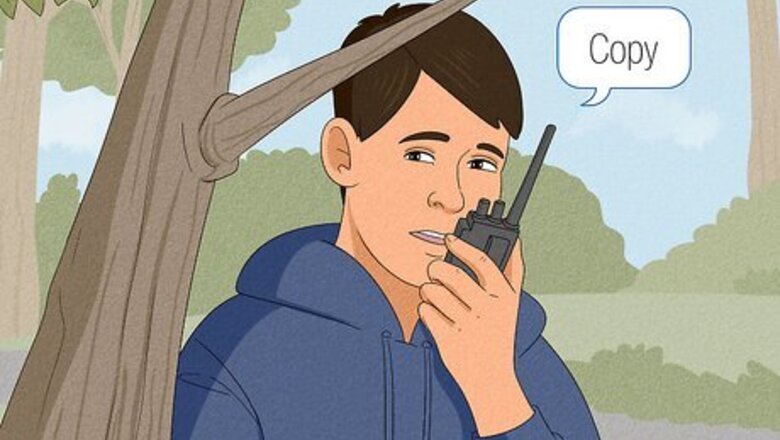
views
Walkie-Talkie Basic Codes & Phrases
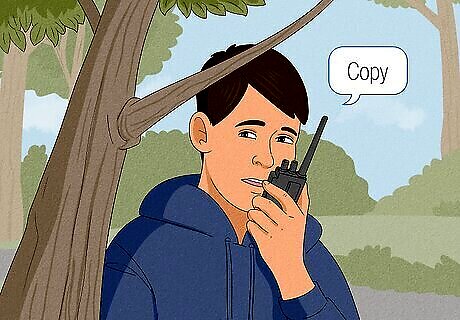
Use these short phrases and words to communicate a longer message. When you talk on a walkie-talkie, you can pretend to be a secret agent, spy, or police officer! Your language can be short, curt, and super secretive—it’s like you’re talking in your own secret code. Here are the most well-known phrases to use while communicating over the airways: Affirmative: Yes Copy: Message heard and understood Disregard: Ignore previous message “Do you copy?”: “Can you hear me?” Eyes on: Can see the target Flying in: Currently on the way Go again: Repeat last message Go for __: Replying that you can hear and understand someone using your name; ex, “Go for Tom.” Loud and clear: Radio is working Negative: No On it: In the process of completing a task Out: Finished communicating Over: Message finished, waiting for response Radio check: Checking to see if communication is working Roger/Roger that: Message understood Say again: Repeat message Stand by: Hold for reply Standing by: Awaiting further instructions Switching: Switching radio channels “What’s your 20?”: “Where are you?”
Walkie-Talkie 10-Codes
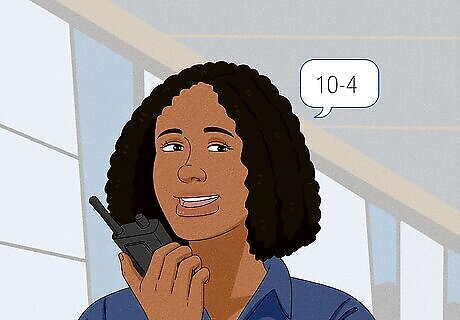
Relay a short message with a 10-code. 10-codes were first introduced in 1937 by Illinois police officers. Every code starts with “10,” and the following number indicates a specific message or detail. The goal of these codes is to relay information quickly and efficiently over walkie-talkies or radio airways. Here are the most commonly used codes: 10-1: Transmission failure or poor signal 10-2: Good signal 10-3: Abort transmission 10-4: Message received and understood 10-5: Relay message to someone else 10-6: Busy, please wait 10-7: Out of service 10-8: In-service 10-9: Repeat message 10-10: Available for calls 10-20: State your location 10-23: At the scene 10-24: Assignment completed These codes are the same all over the world, so you can say them anywhere!
NATO Phonetic Alphabet
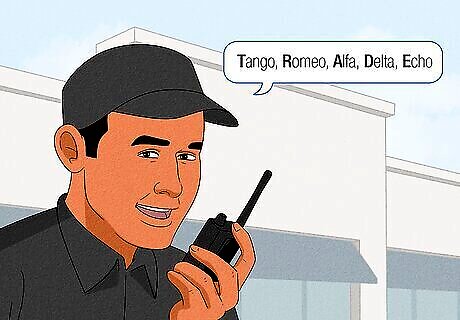
Spell something out with universal code names. When you’re talking over a transmission, things can get lost in translation. Walkie-talkie users often use the NATO Phonetic Alphabet to avoid this. This alphabet code is well-known worldwide and can be useful in almost any situation. Check out what names and words represent each letter of the alphabet: A: Alfa B: Bravo C: Charlie D: Delta E: Echo F: Foxtrot G: Golf H: Hotel I: India J: Juliett K: Kilo L: Lima M: Mike N: November O: Oscar P: Papa Q: Quebec R: Romeo S: Sierra T: Tango U: Uniform V: Victor W: Whiskey X: X-ray Y: Yankee Z: ZuluHow does it work? Use the NATO Phonetic Alphabet to spell out names or messages across airways. For example, if you need help, say, “Hotel echo lima papa.”
Walkie-Talkie Lingo in Movies
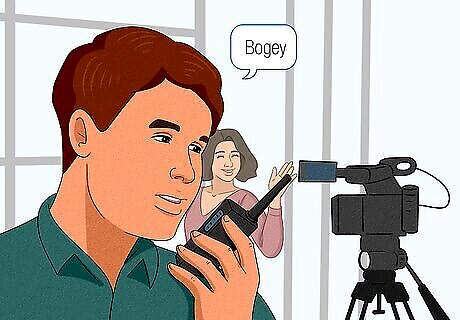
Film sets often use special codes on walkie-talkies while filming. When filming a movie or TV show, producers and crew members may use specific phrasing to identify equipment malfunctions, scheduling conflicts, or team members. Here are the most common walkie-talkie lingo used on set: Abby Singer: The second-to-last shot of the day AD: Assistant director Baby legs: A small tripod Back to one: Doing another take and having everyone go back to starting positions Bogey: Someone who isn’t supposed to be on set Brick: Charged camera battery Dead cat: Fuzzy windshield for a microphone First-team: Primary actors Four-banger: Trailer with dressing rooms Hot points: Someone’s carrying something important (such as expensive equipment) Juicer: On-set electrician Martini shot: The last shot of the day PA: Production assistant Run-and-gun: Filming with little preparation and equipment Second-team: Stand-ins or doubles Sticks: A camera tripod Stinger: Extension cord
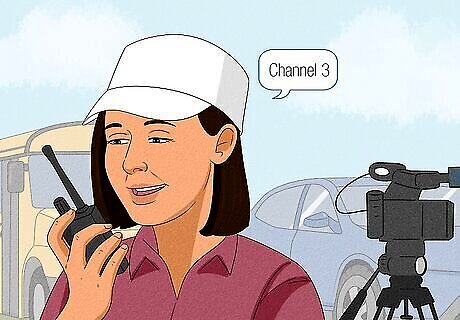
On set, walkie-talkie channels are assigned to production teams. Members of the production crew typically have their own channels while filming. This makes it easier to communicate with specific teams or crew members. Each film set can be different, but here’s the typical breakdown: Channel 1: Main channel for production assistants and coordinators Channel 2: Open channel for longer conversations Channel 3: Transportation Channel 4: Open channel Channel 5: Open channel Channel 6: Camera Channel 7: Electric Channel 8: Grip Channels are usually assigned ahead of production and specified on call sheets.
How to Use a Walkie Talkie
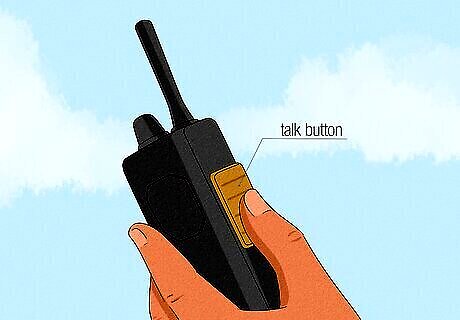
Hold down the talk button. Before talking on a walkie-talkie, make sure you and your friend or team members are on the same channel. Then, hold down the talk button while you speak. Let go when you’ve completed your message and wait for an answer.
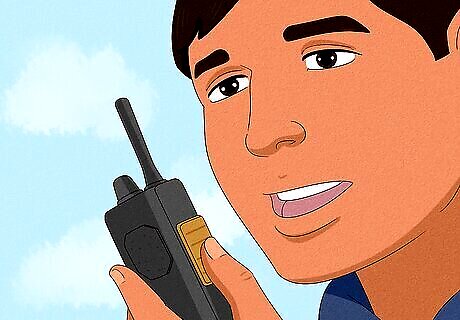
Speak clearly. Static can interrupt messages on the airways, so it’s important to speak as clearly as possible. Enunciate your words and speak at a normal volume and pace. Avoid shouting, as this can cause ear-piercing feedback.
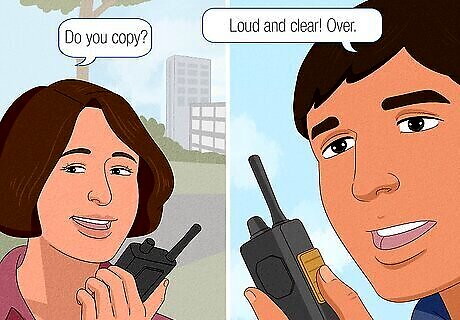
Keep your message short and simple. Walkie-talkies aren’t meant for long messages—they’re not telephones! While you could have a long, deep chat on a walkie-talkie, it’s not ideal. Keep your transmissions short and sweet, and use codes to shorten messages whenever you can. The more to-the-point your message is, the better. Take a look at these example transmissions: Person A: Do you copy? Person B: Loud and clear! Over. Person A: Come in, Ava. Over. Person B: This is Ava. Over. Person A: 10-20. Over. Person B: The tree behind the fountain. Over.
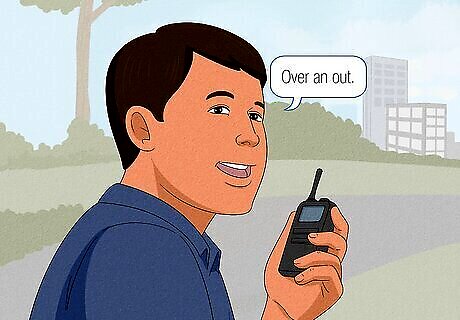
Use a sign-off. Let the receiver know you’ve finished your message with a sign-off. This can be a simple, “10-4,” “Out,” “Over,” or an “Over an out.” When you finish with a sign-off, you’re saying, “That’s all I have to say. You can respond now.”
Walkie-Talkie Etiquette
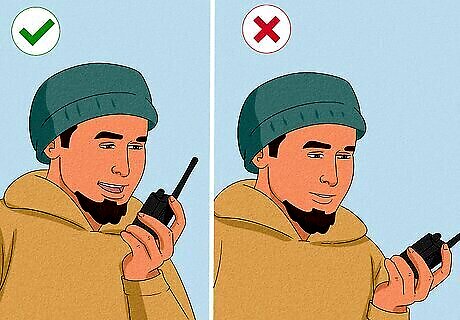
Speak clearly and follow channel rules when using a walkie-talkie. The best advice we have when using a walkie-talkie: be polite! The best things you can do are to speak clearly and follow any rules you were given (if using the walkie-talkie on a set or in a group). If you’re unclear about anything, ask the person in charge for details. To speak clearly while using a walkie-talkie, make sure to enunciate your words and hold down the talk button the entire time you’re talking. If you’re using walkie-talkies with your pals for fun, have at it! Stick to one channel and have fun calling each other over and over again.
Why do we need walkie-talkie lingo?
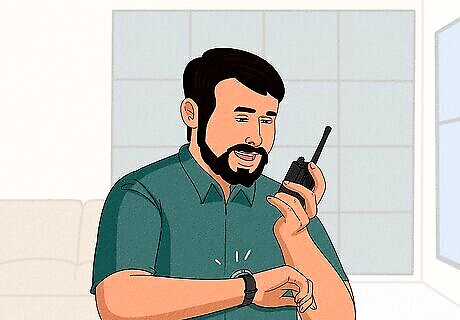
Walkie-talkie lingo makes it easier to transmit messages across airways. Two-way radio communication can get staticky and fuzzy, making it more difficult to have full-length conversations. This is where walkie-talkie lingo and code come in handy. A messenger can quickly relay something that’s easily understood by the receiver.
Walkie-Talkie Conversation Example
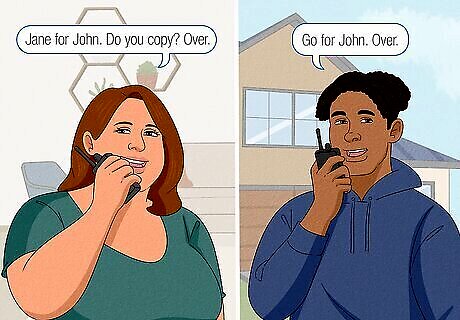
Person A (Jane): “Jane for John. Do you copy? Over.” Person B (John): “Go for John. Over.” Person A (Jane): “What’s your 20? Over.” Person B (John): “On the corner of Ellington and Charlotte. Over.” Person A (Jane): “Stand by. We have a situation. Over.” Person B (John): “Roger that. Standing by. Over.”
Walkie Talkies vs. CB Radios
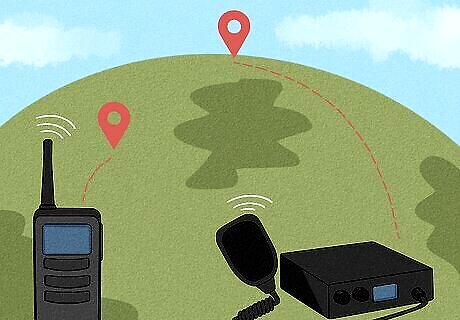
Walkie-talkies have a short range, while CB radios have a long range. Walkie-talkies and CB radios are often confused, and rightfully so—they have a lot in common. Each device offers a way to communicate with other people; however, walkie-talkies are two-way, short-range radios, while CB radios are used for long-distance communication. CB radios have a wider range than walkie-talkies, meaning they can be used to communicate with other radios miles and miles away. The range of a CB radio depends on the location and type of antenna or device. Typically, for every foot of CB antenna, there’s 1-2 miles of range. There are two types of walkie-talkies: FRS (Family Radio Service) and GMRS (General Mobile Radio Service). FRSs have a standard range of 20 to 35 miles, while GMRSs can exceed this range based on location and weather conditions. Walkie-talkies and CB radios can both be used to contact multiple channels. The distance is what differs.
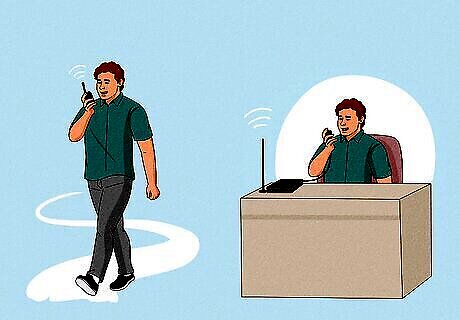
Walkie-talkies are portable, while CB radios can be portable or stationary. Walkie-talkies are portable devices, meaning they can be carried around just like a cellphone. CB radios, on the other hand, can be portable or stationary. The most powerful CB radios with the highest range are usually stationary and feature large antennas. Portable CB radios typically have the same range and design as standard walkie-talkies.
















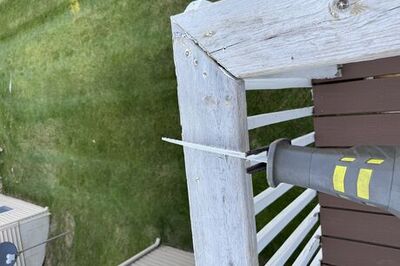



Comments
0 comment